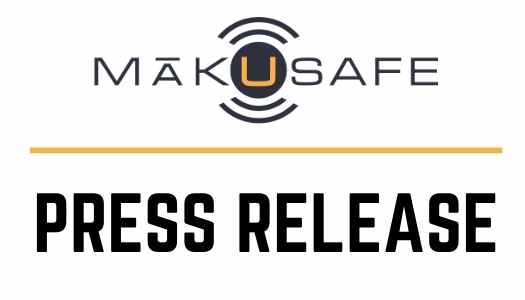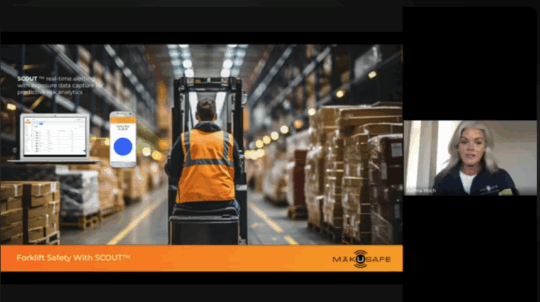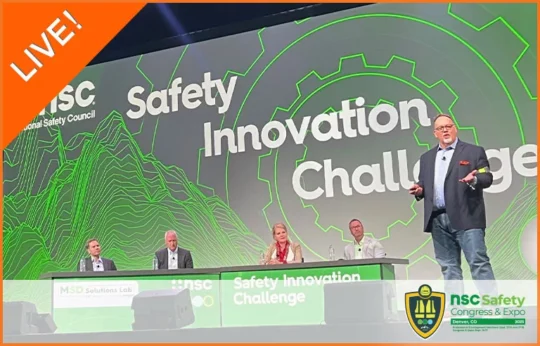Construction Safety, Culture, and Engagement – MākuSafe in EHS Today
April 15, 2020
EHS Today Editor, Adrienne Selko, recently interviewed MākuSafe. In this article, benefits to the construction industry are discussed. Beyond their impact to safety, our wearable technology may also impact organizational culture, worker engagement, lean process improvement, quality initiatives, as well as retention and attraction.
Will New Safety Strategies in Construction Attract Workers?
Safety technology and employee engagement practices are drawing a new generation of workers to the construction industry.
Adrienne Selko
APR 14, 2020
If construction workers of the past could glimpse into the future and spend the day with colleagues, they might be quite surprised at the new look and feel of the industry.
Dodging drones, sporting goggles programmed with virtual reality, and looking at IoT-based data analytics, these workers would marvel at the daily routine at construction sites.
While the future isn’t here just yet, some companies are currently adapting these new technologies which will make construction sites safer and simultaneously serve to attract future workers.
Attracting workers to the construction industry requires companies take a different approach. As well as needing a safe place to work, employees are looking for companies to provide jobs that are exciting, filled with opportunity, and a great place to build a career, according to Stan Evans, EHS project director for Turner Construction.
“Companies now need to sell themselves as people have multiple options in the job market,” explains Evans.
And competition is fierce. While the industry currently employs 10.7 million, there were 300,000 vacancies as of June 2019, according to the U.S. Bureau of Labor Statistics. And by 2026 the sector is expected to need 747,000 more employees.
To find those workers, companies such as Alberici Constructors are looking to educate a wider audience on the benefits of a career in construction.
“We need to talk to middle school students, parents, teachers and school boards to encourage them to tell students that a college education is not the only choice,” says Kathleen Dobson, safety director at Alberici Constructors. “The building trades is an excellent place to have a career.”
And for those who do choose to go to college and want a career in safety, the construction industry is also a good option, adds Dobson. “We have done a good job improving the safety of the field.”
Wearables are Upping Safety Scores
One big advancement in safety has come through the use of wearable devices. These devices can detect unsafe behavior as it’s happening and either offer an alarm to alert an employee to potential danger or record the infraction for review at a later time.
“Using the device is like having eyes and ears that are protecting workers,” explains Mark Frederick, co-founder of MākuSafe, which provides a device that monitors motion, location and environmental conditions such as sound exposure, air quality, heat and light.
Another valuable tool embedded in this wearable is the ability to talk into a voice recorder. The best use of this feature is in reporting a near miss or hazardous situation.
“This method of reporting the actual condition of the worker is bringing safety to a new level,” says Frederick. “Safety leaders are able to see things that they weren’t able to before and can now have conversations in real-time to correct any situation. Addressing these issues so quickly sends a message that the company cares about their employees’ well-being.”
Demonstrating concern for workers’ well-being is essential to both retaining and attracting employees, says Dobson. “Employee engagement is key. You need to sit with employees at breaktime and get to know them by name, learn their hobbies. This is how you create a strong work culture.”
Dobson has observed that over the years the construction industry has made major improvements in creating a better working environment. “We are now giving people the authority and ability to stop doing something that they deem incorrect, without the fear of retaliation.”
She sees other culture changes happening as well. Seasoned workers who followed the attitude of doing things because that was the way it was always done are learning to say, “We appreciate and recognize your concerns.”
Management needs to remember that when you are working in the field, you don’t have an HR department, says Dobson. “Your field supervisor is that person. And if they don’t appreciate the concerns of younger people in general, then that’s a problem.”
Evans agrees with that sentiment. “New employees, and especially younger ones, have different concerns than past workers had. People looking for jobs and careers are knowledgeable and willing to speak up about what they want in a career. To get good people you have to lay out a career path.”
And Evans has found that having technology, such as wearables and virtual reality, is integral to younger people choosing a career in construction. “This is a major selling point when we recruit. These students are excited about using VR and wearables, especially in problem-solving, a job characteristic they desire. “
Lean as a Safety Tool
Another way to address the issue of workplace development is to have systems in place that will improve both the quality of the organization as well as the knowledge of the workforce. And one of the time-tested processes to achieve both of those goals is the lean management system.
At Turner there are dedicated lean managers for every region. “The managers are responsible for educating the entire company, through business units, on good lean practices,” says Evans.
Every safety manager has been slated to go through a week-long lean training. It’s a company-wide effort which is different from past training which would be reserved for managers or executive level personnel.
One practical application of the training is determining the most effective use of workers’ movements, says Evans. “We keep all of our supplies on wheels, which limits the time that people have to touch materials and it also reduces movement, which in turn reduces injuries, especially soft tissue ones.”
Evans also has found value in viewing safety strategy from a lean perspective. He is able to clearly identify how safety can be incorporated into the sequence of work with an eye toward limiting hazardous activities. “Safety is valued at a higher level now.”
Evans is taking his lean knowledge to his current project, which is the high-profile construction of the SoFi Stadium in California, future home of the NFL’s LA Rams and LA Chargers. As project manager, Evans must take into consideration the 3,600 people that work at the site.
To keep on top of things, there are daily and weekly meetings to discuss incidents, near-misses and root cause. Instead of pre-task planning forms that a foreman would fill out and have everyone sign, Turner uses whiteboards. “We identify what the scope of the work is that day and every challenge associated with it.”
Of course, incidents arise and on Feb. 28 a crane collapsed at the site. The collapse happened when a crane being moved struck the boom of another crane, causing it to fall. No one was hurt, according to LA County Fire officials.
But building difficult projects is part of Turner’s allure. “To differentiate ourselves, we take the toughest builds out there and we build things that matter,” says Evans. “We take those once-in-a-lifetime jobs and take on the challenges.”
He feels that this also serves to attract the younger workers who want to be part of something that they can talk about for years to come.





